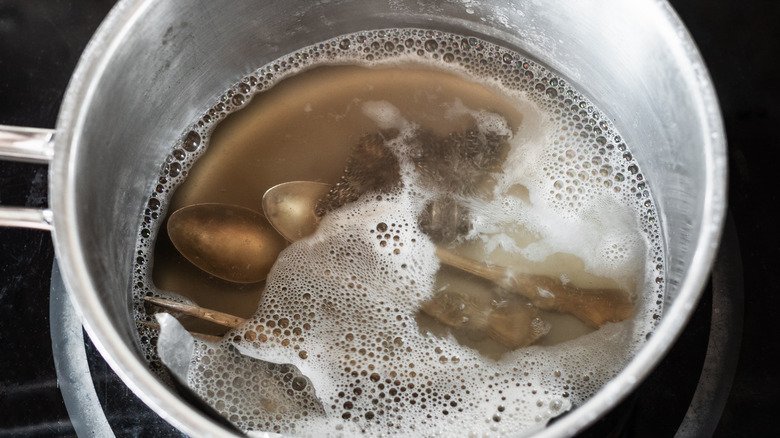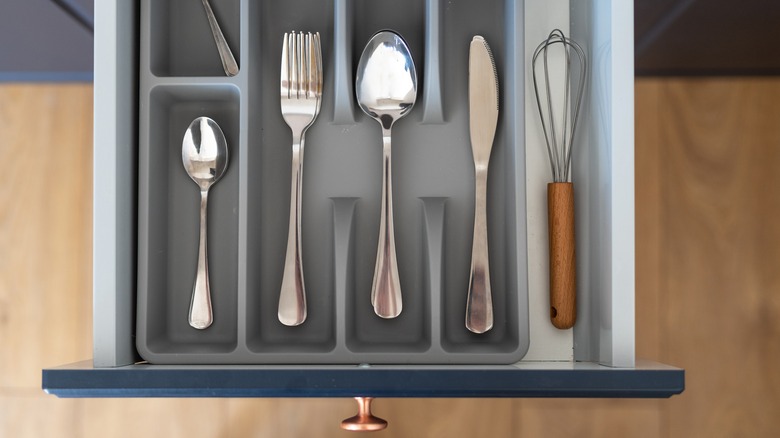Martha Stewart's Best Tips And Tricks To Remove Tarnish From Your Flatware
If your set of kitchen knives, spoons, and forks are starting to look discolored or perhaps even blackened, you may think you're doing something wrong. You might also think the set you purchased or was gifted to you might not be up to par. However, don't jump to any conclusions just yet.
The truth is that even if you have the best set of silverware, there's no foolproof method to prevent it from tarnishing. When silver is exposed to air, it responds to chemicals — specifically, silver reacts to sulfur compounds that are naturally found in the air we breathe (via Chemistry World). This chemical reaction results in a thin layer of tarnish, which appears as darkened, black, or green discoloration on the object, whether it be silverware or jewelry. Oils from food can hasten the tarnishing process, as can sweat when wearing jewelry (via Ines Bouwen).
However, before you throw in the towel, there are ways to remove tarnish quite easily according to everyone's favorite home expert, Martha Stewart.
A baking soda and aluminum mix is all you need
Home guru Martha Stewart offers a relatively easy way to remove tarnish from your silverware and get it sparkling once again. First, you have to find an aluminum pan — it has to be aluminum in order to force a chemical reaction to happen, which of course removes the tarnish. Then, spread your silverware across the pan and sprinkle baking soda over each utensil. About one-half to one whole cup of baking soda should do the trick. Next, pour a layer of boiling water directly over the silverware and use just enough to cover the utensils. You'll see the tarnish fade away.
When baking soda and boiling water mix, they carry away the sulfur molecules from the silverware. Those molecules adhere to the aluminum, thereby removing the tarnish. If you don't have an aluminum pan, everyday household item — aluminum foil — should suffice (per The Guardian).
How to preserve your silverware
Once the tarnish is removed, you can polish your silverware. However, while tarnish doesn't damage silver polishing can – oddly enough – particularly if you do it too much (via Martha Stewart). Polishing can wear off small pieces of metal each time you take a product-damp towel to your utensils.
When polishing silverware, you should employ an up-and-down motion only. Martha Stewart recommends using a soft cloth to polish your silver forks, spoons, and knives. You can also use a cut-up t-shirt, which can work quite well when polishing.
Since silver tarnishes faster in areas where there is bright light and high humidity, The Kitchn recommends storing silver in a closed bag or box and adding a piece of chalk to the container — the chalk will help absorb moisture and prevent tarnishing.
Although you make your best effort to prevent tarnishing, don't be alarmed when it happens. Simply employ the baking soda method and your silverware will be back to new in no time.


